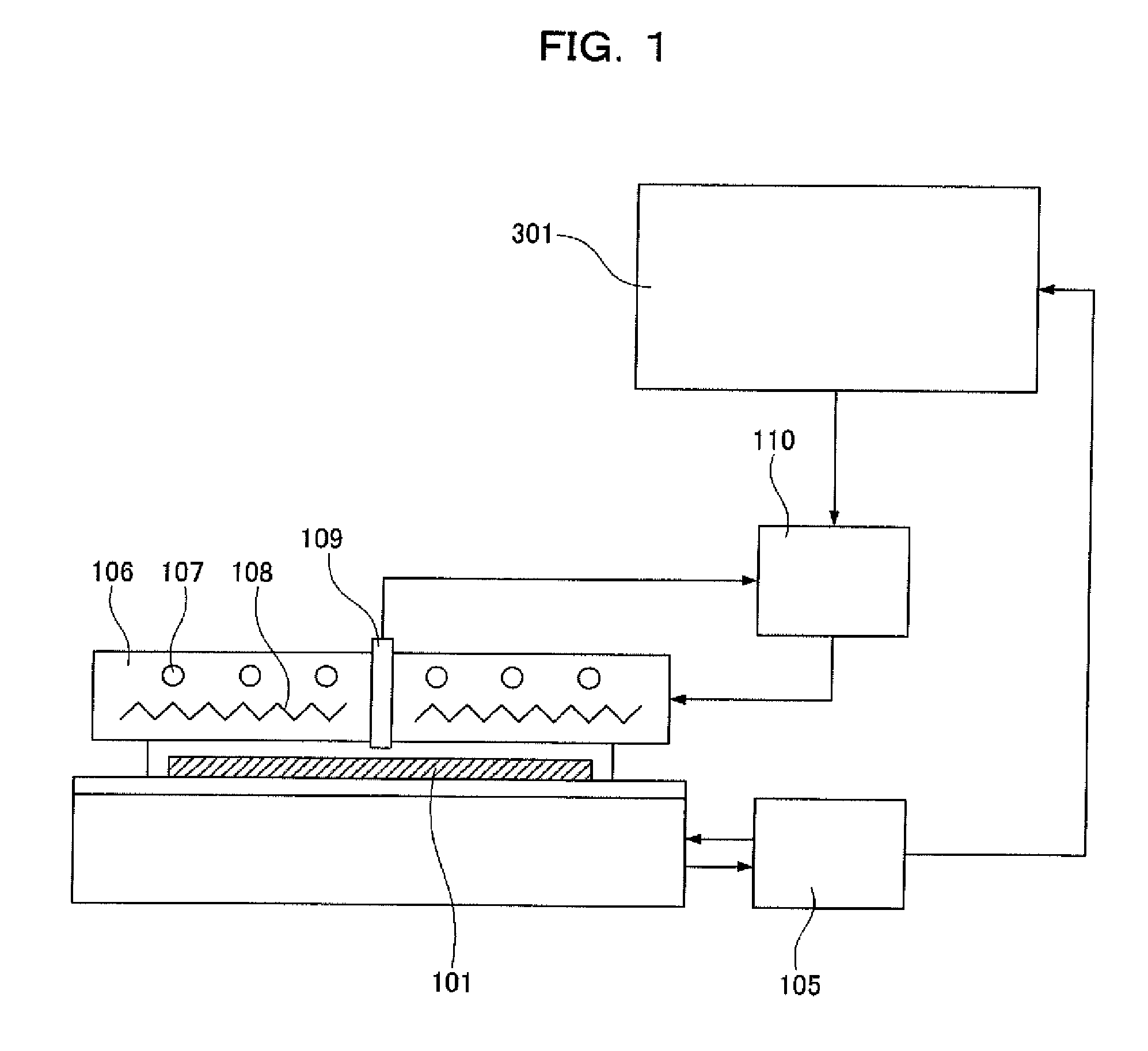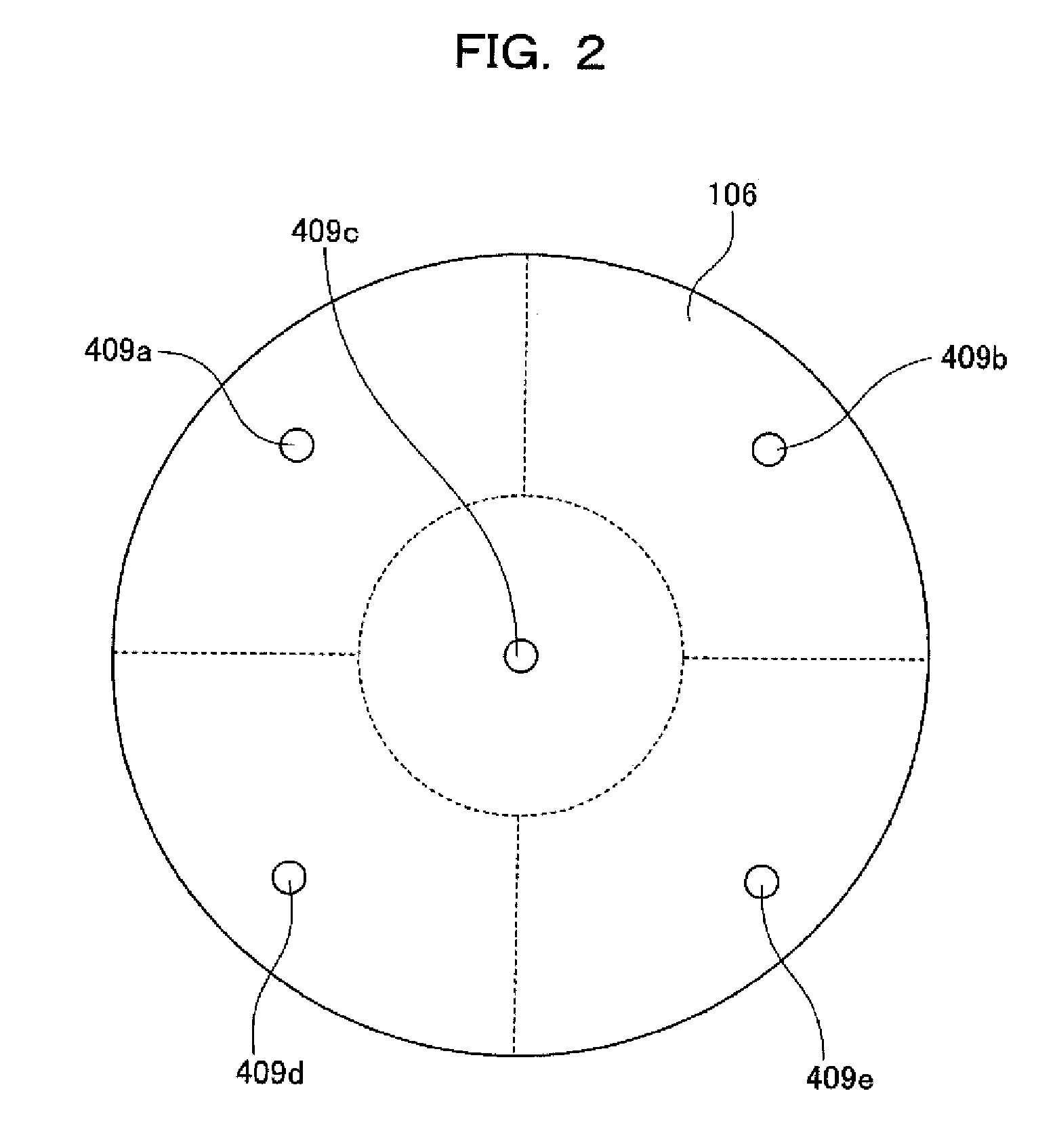Wafer-level burn-in method and wafer-level burn-in apparatus
a burn-in apparatus and wafer-level technology, applied in the direction of individual semiconductor device testing, semiconductor/solid-state device testing/measurement, instruments, etc., can solve the problems of insufficient screening, considerable damage, and the temperature of the wafer cannot be controlled to the desired temperature, so as to prevent the wear and burn of the probe. , the effect of high reliability
- Summary
- Abstract
- Description
- Claims
- Application Information
AI Technical Summary
Benefits of technology
Problems solved by technology
Method used
Image
Examples
first embodiment
[0044]FIG. 1 is a schematic diagram showing a wafer-level burn-in apparatus according to a first embodiment of the present invention. In the first embodiment of FIG. 1, a temperature correction value calculator 301 is added to the configuration of FIG. 4.
[0045]In wafer-level burn-in using this configuration according to the first embodiment, when an electrical load is applied to devices formed on a wafer 101, a difference between the actual temperature of the wafer 101 heated by the power consumption of the devices and a temperature measured by a temperature sensor 109 is calculated beforehand by experiment as a calorific value per unit area of the wafer 101, that is, a heat density function. The first embodiment uses the following direct proportional relationship:
ΔT=γ×D (1)
where ΔT represents a difference between the actual temperature of the wafer 101 and a temperature measured by the temperature sensor 109, D represents the heat density of good devices on the wafer 101, and γ re...
second embodiment
[0049]FIG. 2 is a schematic diagram showing a divided temperature regulating plate according to a second embodiment of the present invention. FIG. 6 is a schematic diagram showing a wafer-level burn-in apparatus according to the second embodiment.
[0050]In the second embodiment of the present invention, as shown in FIG. 2, a temperature regulating plate 106 in the configuration of FIG. 1 is divided into five areas of area “a” to “e”. As shown in FIG. 6, heaters 601, coolant passages 607, temperature sensors 409a to 409e, temperature regulators 610, and temperature correction value calculators 611 are independently disposed and temperature control is performed for each divided area. In other words, unlike the first embodiment for handling a measurement error caused by a heat density, the second embodiment also handles variations in heat density in the respective areas of a wafer.
[0051]In wafer-level burn-in according to the second embodiment configured thus, when an electrical load is...
third embodiment
[0056]A third embodiment of the present invention is configured like the first embodiment of FIG. 1.
[0057]In wafer-level burn-in according to the third embodiment, regarding a difference between a temperature measured by a temperature sensor 109 and the actual temperature of a wafer 101 during heat generation on devices by power consumption, the influence varies with a distance between the temperature sensor 109 and the devices formed on the wafer 101. Considering this point, a weight constant is set for each device according to a distance in the planar direction of the wafer 101 from the temperature sensor 109 based on the relationship between the temperatures of the temperature sensor 109 and the wafer 101 in each thermal distribution and at each heat density, through experiment in which the temperature sensor is installed beforehand and a wafer allowing heat generation with a desired thermal distribution and a desired heat density is used. In other words, unlike the first embodim...
PUM
 Login to View More
Login to View More Abstract
Description
Claims
Application Information
 Login to View More
Login to View More - R&D
- Intellectual Property
- Life Sciences
- Materials
- Tech Scout
- Unparalleled Data Quality
- Higher Quality Content
- 60% Fewer Hallucinations
Browse by: Latest US Patents, China's latest patents, Technical Efficacy Thesaurus, Application Domain, Technology Topic, Popular Technical Reports.
© 2025 PatSnap. All rights reserved.Legal|Privacy policy|Modern Slavery Act Transparency Statement|Sitemap|About US| Contact US: help@patsnap.com



